Optimizing end products with finely tuned process parameters
Microcapsules provide an excellent way to extend the shelf-lives of essential oils, vitamins, flavors and many other active ingredients, and protect them from external influences. A key consideration, however, is process optimization, which plays a decisive role in the quality of the ingredients and their release profiles.
- Author: Dipl.-Ing. Katja Oppermann, Process Engineer, Process Technology Food, Feed & Fine Chemicals, Glatt Ingenieurtechnik GmbH
- originally published in the trade magazine ‘Sweet Vision’, issue 06/2017 S. 54-55, Publishing House ERLING Verlag GmbH & Co. KG
A fundamental unit operation for food, bakery and confectionery manufacturers is the processing of powdered raw materials and premixes. To protect functional ingredients, to control their release behavior and to extend their shelf-lives — as well as ensure their safe storage and transportation — sensitive substances are often encapsulated with the help of fluidized bed and spouted bed technologies. A technology leader in this field, Glatt Ingenieurtechnik (Weimar, Germany), specializes in particle design and process and plant engineering. Glatt’s experts are well versed in selecting the most appropriate parameters for a wide range of applications.
More stable, effective, customized
To cite an example, sugar granules or sugar substitutes can be enhanced with special aromas and colorings. In confectionery chews and sweets, the effect is used to prevent ingredients such as citric acid and sodium bicarbonate from reacting prematurely.
Without encapsulation technology, it’s difficult to incorporate highly volatile oils such as vanilla, orange or peppermint into foodstuffs without a certain loss of quality. With the help of microencapsulation, though, solid, liquid or gaseous active substances can be homogenously blended into a carrier matrix material. Furthermore, the properties of microcapsules can be precisely adjusted in the process chamber of a fluidized bed or spouted bed apparatus, delivering reproducible quality even at large quantities (tons). Matrix materials such as modified starches, proteins or celluloses can protect sensitive ingredients such as microbial cultures (yeasts, for example) or probiotics (such as lactic acid bacteria).
Efficient fluidized and spouted bed processes
Fluid bed and spouted bed technologies are based on the principle of particle turbulence in an upwardly flowing gas stream. This causes the particles to behave like a fluid— also known as fluidization — rendering the entire surface of the fluidized particles freely accessible for wetting, drying and layering processes. A distributor plate ensures that the process gas stream maintains defined flow properties, which subsequently influence the drying conditions. Thus, particles can be dried in a targeted and highly efficient manner, and tailored for specific applications. The process chambers for fluid and spouted bed processing differ in their geometry, which has a considerable influence on the fluidization behavior. The apparatus for both fluidized bed and spouted bed technology consists of the inlet gas chamber, a process chamber and a spraying and a filtration system.
How microencapsulation works
When it comes to encapsulation, core shell encapsulation and matrix encapsulation are often used interchangeably. During matrix microencapsulation, gases, fluids or solids must be homogenously dispersed (dispersed phase) in a uniform matrix (continuous phase) that provides the desired particle and bulk material properties. Matrix microencapsulation is based on the method of spray granulation: an active-containing liquid is sprayed into the process chamber. An upward-flowing gas fluidizes the core particles, which are then wetted with the sprayed-in liquid that solidifies like a film on the surface of the particles. This continuous process of spraying, layering and film solidification is repeated until the desired particle size is reached and the product is discharged.
Fine adjustment of the process parameters
The process parameters influence the shape, structure, residual moisture and size of the resulting microcapsules. These properties are linked to the release profile of the active ingredient, which can subsequently be induced by exposure to a specific pH value, temperature or moisture level. The process variables can be determined in parameter studies, simulation models and trials on lab-scale units and pilot plants, such as those in Glatt’s technology center. In the trials, different process conditions and recipes are tested and compared. On the technical side, these variables include
- selection of suitable process inserts (fluidized bed or spouted bed)
- spray air pressures of spray nozzles
- ideal fluidized bed volume
- temperature in the process unit
- process gas volume
- retention time
- selection of materials for microencapsulation.
Case study: vitamins
In a series of continuous mode trials, heated vitamin A acetate and vitamin E acetate were introduced as a dry substance into the process chamber. Modified starch was used as a capsule former and maltodextrin or microcrystalline cellulose was used as the matrix material (in pellet form). The goal was to gently encapsulate the ingredients into a solid matrix with homogenous distribution and the highest possible recovery rate. The desired end product was a dust-free, compact, light- and oxidation-protected vitamin granule with an ideal release profile.
Recovery rates of oxidation-sensitive substances such as vitamins can be assessed in the laboratory using HPLC analysis. The results of the trials showed that the highest recovery rates were obtained with a low product temperature, a high spray rate and a high spray pressure. In the case of sensitive active substances such as these, the retention time in the process turned out to be critical, as this promotes oxidation. Retention time and layer mass are directly related: a low retention time and lower levels of process-related stress ensure the best results.
To maintain the functional and nutrient-physiological properties of ingredients, short retention times with higher heat and material transfer rates result in more gentle treatment. For food applications, the products are usually exposed to a moderate heat of 30–40 °C. Thus, temperature-sensitive ingredients such as enzymes, proteins, aromas and micro-organisms can be successfully encapsulated.
Additives and Coatings
In addition to technical parameters, encapsulation challenges can also be overcome by modifying the formulation, such as by using stabilizing additives and/or applying a protective coating. The selection of the carrier material is determined by the required release mechanism and the active substance.
Starting small
In conclusion, it is most economical to start small and do tests on a laboratory plant with lower quantities of raw materials. With the help of in-process analyses of the active substance or other important particle characteristics — such as size and bulk density — procedures can be quickly adapted to obtain the desired product properties. Glatt provides test facilities with various process operations, system configurations and laboratory equipment at its Technology Centre in Weimar, Germany. A team of experienced food and process engineering experts is available throughout the usually week-long test series. For reliable scale-up to production scale — especially useful for continuous processing — local pilot plants are also available.
Further information on this topic and related topics can also be found in the following publications:
Published article: ‘How to Tame Recalcitrant Ingredients with Technological Processes’ PDF, English
Published article: ‘The gentle processing of highly volatile oils by fluid bed and spouted bed technology’ PDF, English
Published article: ‘Spray (micro)encapsulation of sensitive substances in matrix form – An overview of essential oil and vitamin case studies’ PDF, English
Published article: ‘Hot-melt applications for the food and beverage industry – How to safely stabilize vitamins and probiotics’ PDF, English
Published article: ‘Outsourcing – Trust in competent partners’ PDF, English

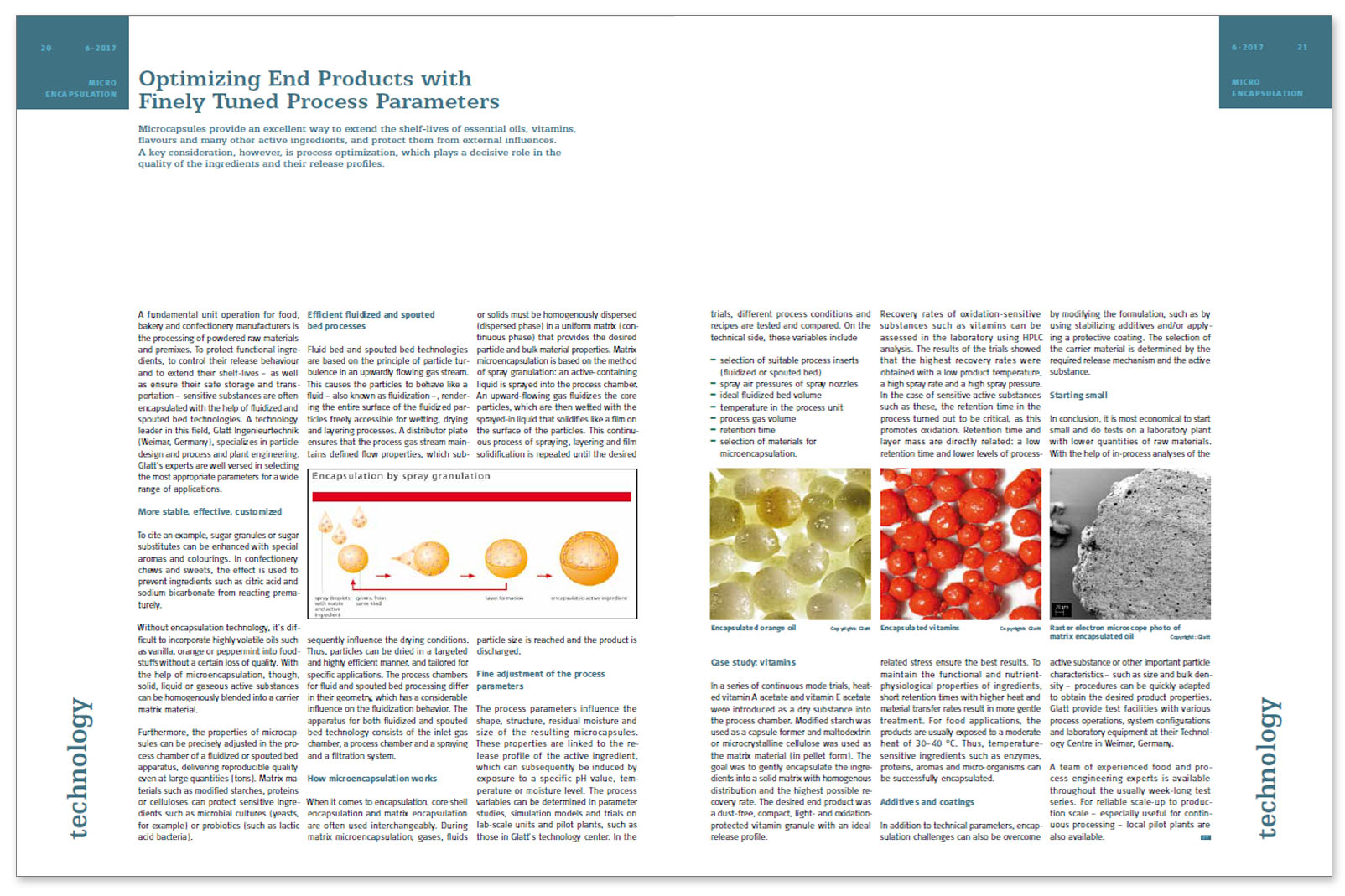
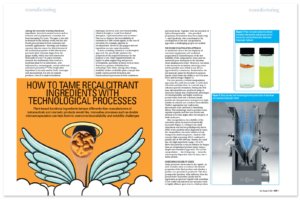
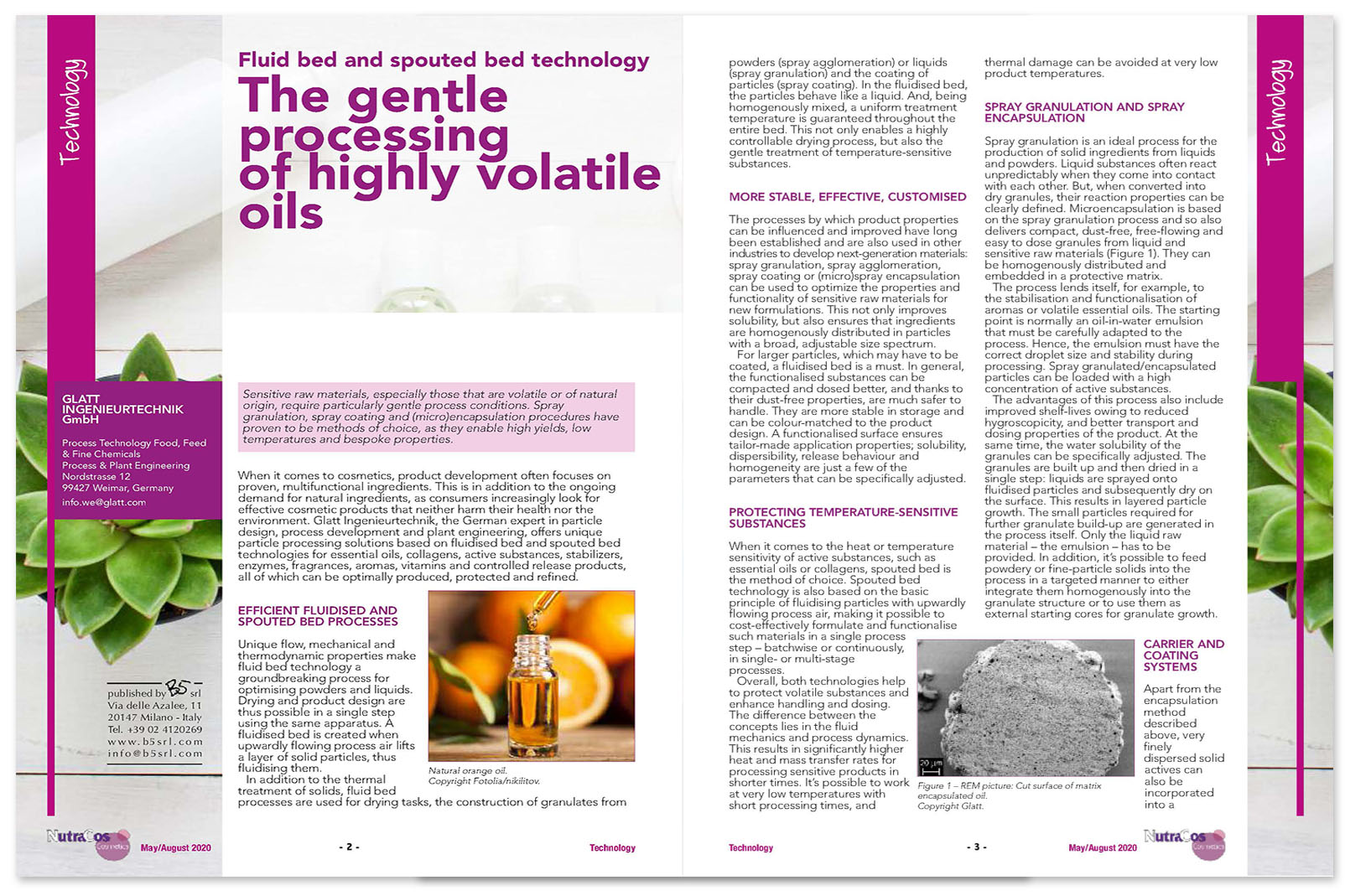
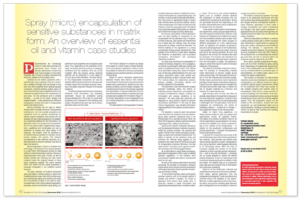
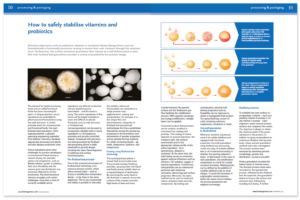
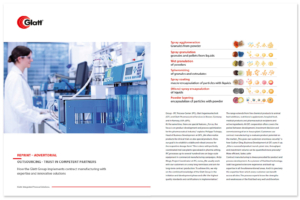
 Copyright: LT Food Medien-Verlag GmbH
Copyright: LT Food Medien-Verlag GmbH Copyright: Konradin-Verlag Robert Kohlhammer GmbH
Copyright: Konradin-Verlag Robert Kohlhammer GmbH